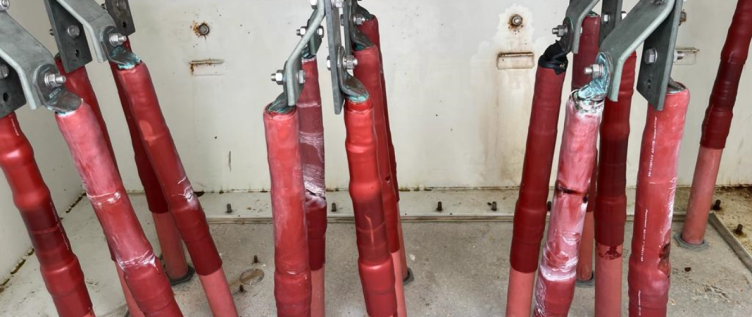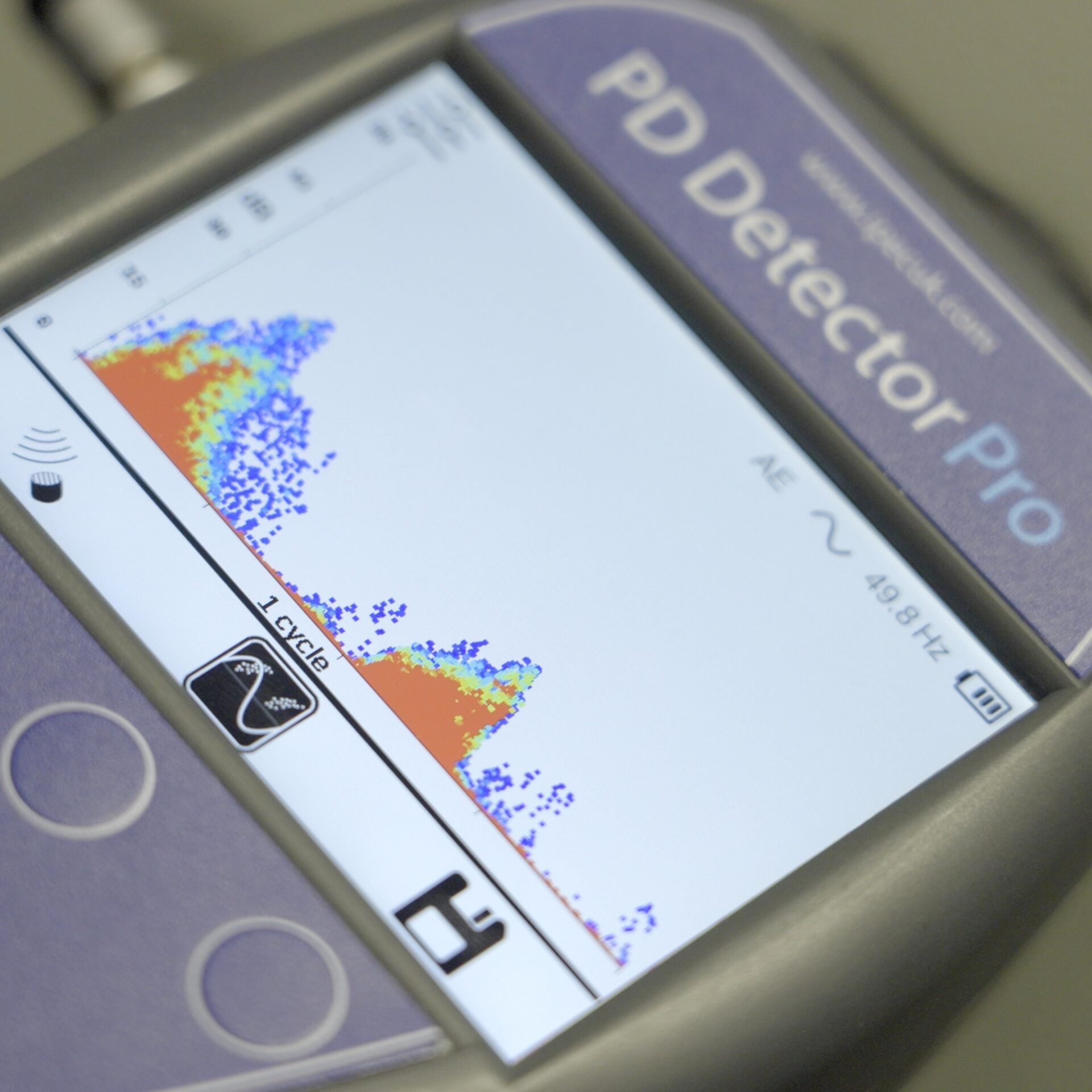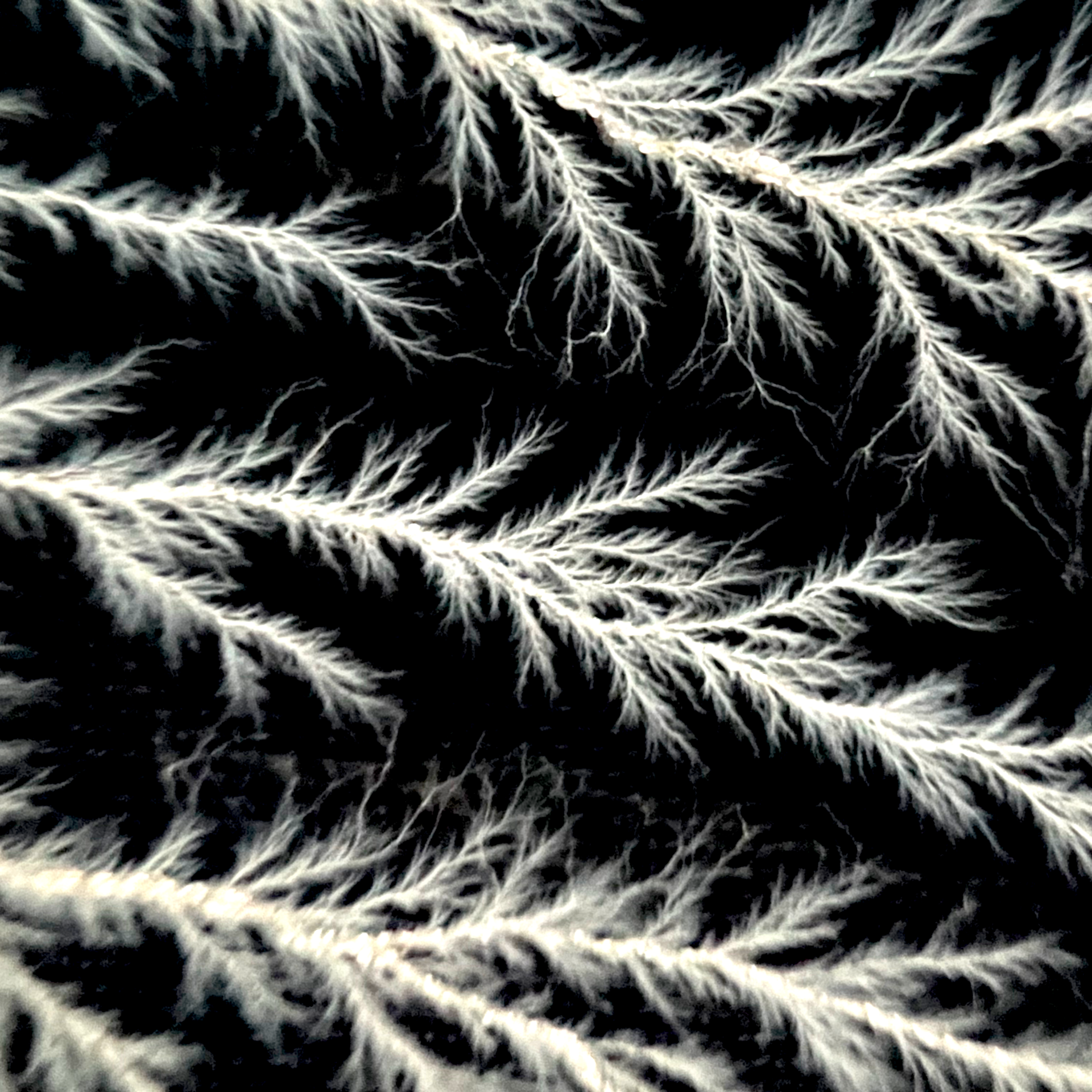
Nitric acid damage due to Partial Discharge
11 / 07 / 23
Insulator surface erosion
PD activity in air forms Ozone (O3) and Nitrogen Oxides (NOX) and in particular, on the surface of organic insulators, Nitric Oxide (NO). In the presence of moisture, for instance, in a high-humidity environment, Nitric Oxide will form nitric acid (HNO3) which is highly corrosive. Nitric acid on the insulator surface causes electrolytic erosion and ageing of the polymer surface by breaking molecular bonds or chain scission. This causes the insulator to become rough and over time leads to the loss of hydrophobicity, with the surface eventually becoming hydrophilic.[1]
This leads to increased moisture and conductivity on the insulator surface, which in turn increases leakage current, partial arcs, and dry bands. These effects give rise to surface tracking that will eventually cause flashover and an HV Fault.

The damage caused by nitric acid to insulator surfaces often looks like a white powder. When the surface is severely damaged this cannot be wiped clean. If the damage is at an early stage, the insulator may be superficially cleaned but the underlying damage remains and degradation will continue.

Here the damage can be seen on the surface of a VT.

Here the damage can be seen on the surface of cable insulation in a cable termination box.
More photos showing HV assets damaged by nitric acid:



[1] Elizabeth Da Silva Domingues “Improved Condition Monitoring of Composite Insulators” Ph.D. Thesis, School of Electrical and Electronic Engineering, The University of Manchester, Manchester, UK, 2012.




